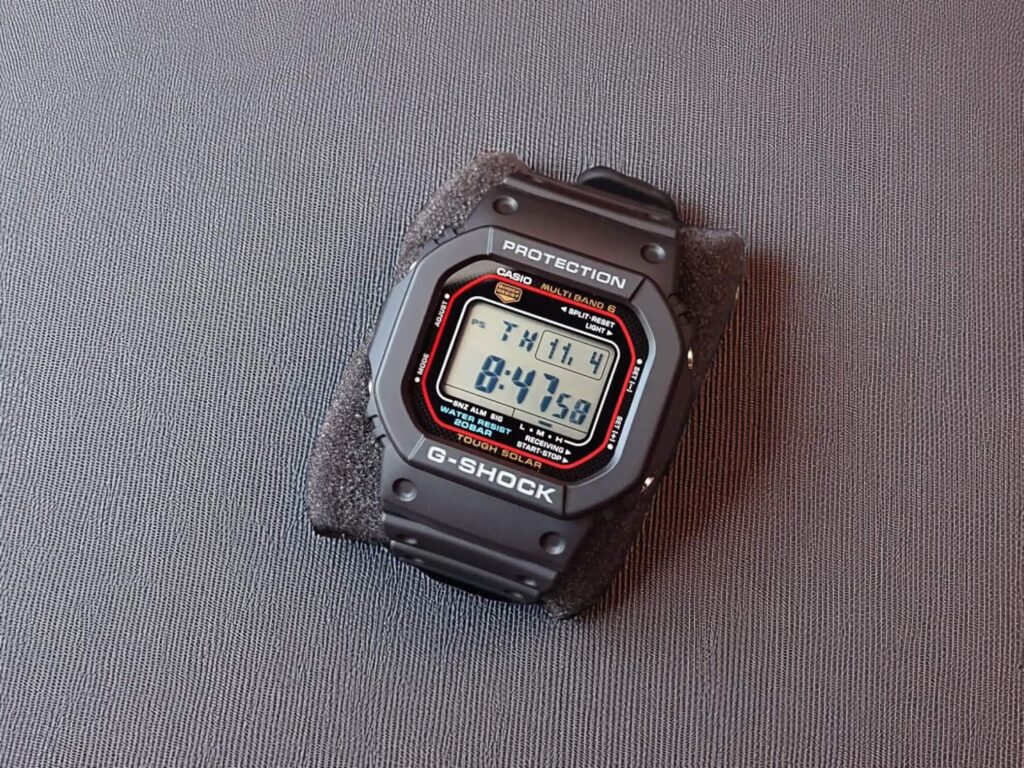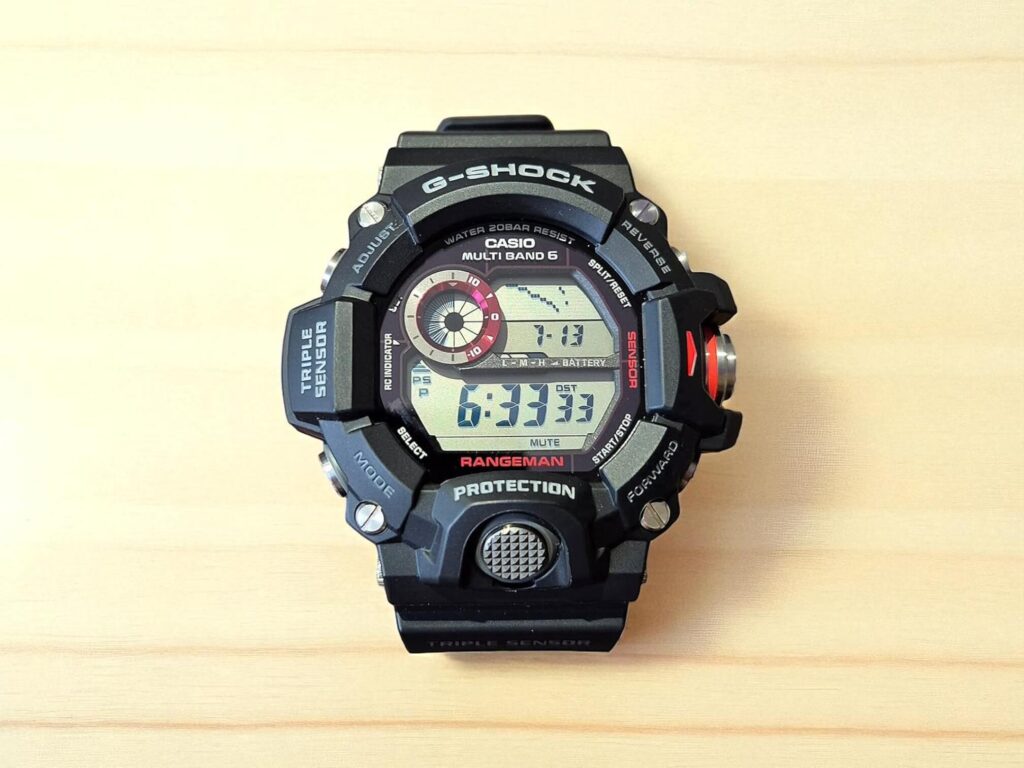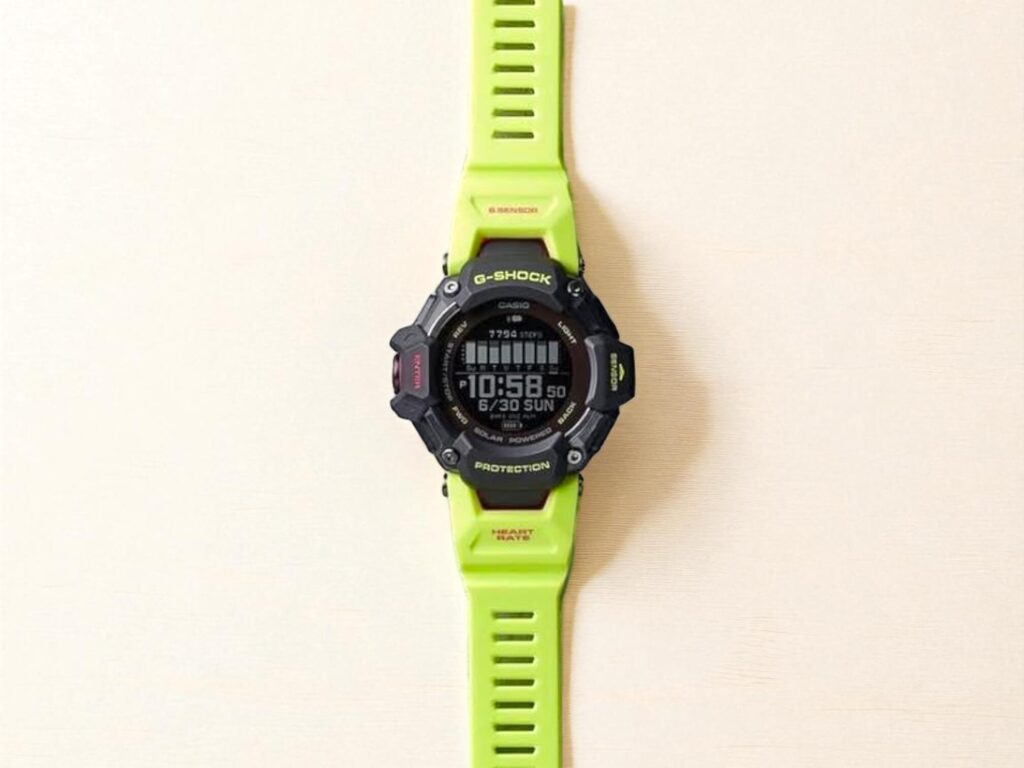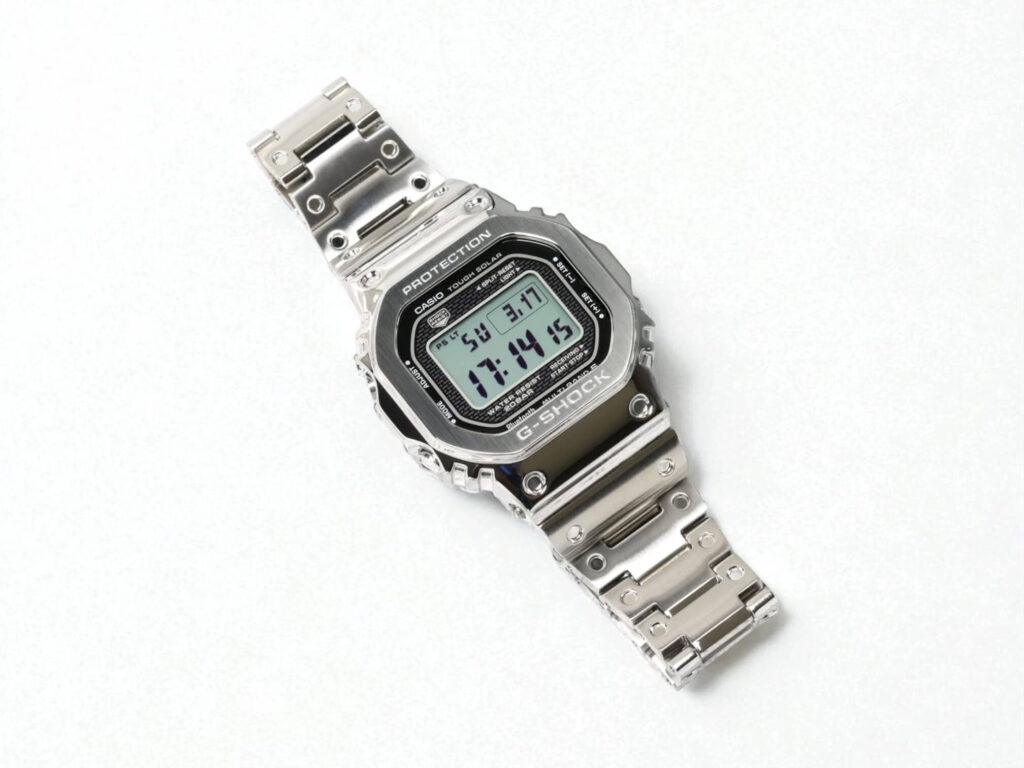Best G-Shock Watches for 2025: Our Top Picks
You’re looking at watches online, and suddenly you’re drowning in specs: 20-bar water resistance, Multi-Band 6, Triple Sensor, Tough Solar. What does any of this actually mean, and which G-Shock should you buy?
Here’s the truth: G-Shock has been making virtually indestructible watches since 1983, and they’ve only gotten better. While everyone else jumped on the smartwatch bandwagon, Casio stuck to what they do best—building watches that laugh at punishment and keep ticking for years without charging.
This guide breaks down the best G-Shock watches for 2025, what makes each one special, and how to pick the right model for your actual life. Whether you’re spending $100 or $500, you’ll know exactly what you’re getting.
Contents
- Why G-Shock Watches Still Dominate in 2025
- 7 Best G-Shock Watches for 2025
- 1. Best Overall: G-Shock GW-M5610U ($150-170)
- 2. Best Budget G-Shock: G-Shock DW-5600E ($50-70)
- 3. Best for Outdoor Adventures: G-Shock Rangeman GW-9400 ($210-250)
- 4. Best for Fitness Tracking: G-Shock GBD-H2000 ($400-450)
- 5. Best Analog-Digital G-Shock: G-Shock GA-2100 ($100-130)
- 6. Best Full Metal G-Shock: G-Shock GMW-B5000D ($550-600)
- 7. Best G-Shock for Smaller Wrists: G-Shock GMD-S5600 ($99-120)
- Understanding G-Shock Technology Without the Marketing Speak
- Common Questions About G-Shock Watches
Why G-Shock Watches Still Dominate in 2025
Smartwatches die after two days. Fitness trackers need to be charged every week. Your phone battery barely makes it to dinner.
G-Shock watches? They run for months on a single battery, or indefinitely if you go solar. That’s the core difference right there.
But durability goes deeper than battery life. These watches are built around Casio’s shock-resistant construction, which suspends the actual watch module inside a protective case. Drop it from a ladder, bang it against a doorframe, wear it while swinging a hammer—it keeps working.
The 200-meter water resistance isn’t marketing fluff either. That’s real diving depth. You can swim, surf, shower, and forget you’re wearing it.
In 2025, G-Shock models will now include GPS tracking, heart rate monitors, and Bluetooth connectivity without sacrificing the legendary toughness. You get modern features with old-school reliability, which is rare in today’s disposable tech world.
7 Best G-Shock Watches for 2025
1. Best Overall: G-Shock GW-M5610U ($150-170)
This is the direct descendant of the original 1983 G-Shock, and it’s still the smartest choice for most people.

The square case design is iconic and comfortable. Tough Solar means you’ll never change the battery. Multi-Band 6 atomic timekeeping automatically syncs with radio towers in the US, UK, Germany, Japan, and China for perfect accuracy.
The updated version released in recent years fixed the main complaint about older models—the display is now much easier to read in bright sunlight. The auto LED backlight actually works well in the dark.
Who it’s for: Anyone wanting a reliable daily watch without overthinking it. Construction workers, students, military personnel, or just people tired of babying their tech.
Minor drawback: No smartphone connectivity if that matters to you.
2. Best Budget G-Shock: G-Shock DW-5600E ($50-70)
If you’re skeptical about spending $150+ on a watch, start here. This is the absolute baseline G-Shock, and it’s shockingly capable for the price.
You get 200-meter water resistance, shock protection, a stopwatch, alarms, a countdown timer, and a backlight. That’s it. No solar, no atomic sync, no Bluetooth. Just a tough watch that runs for 2-3 years on a cheap battery.
The small square case fits any wrist size. It’s lightweight enough that you forget you’re wearing it. And when it inevitably gets scratched and beaten up, you won’t care because it costs less than dinner for two.
Real talk: This is the watch that proves you don’t need to spend a fortune for G-Shock toughness.
3. Best for Outdoor Adventures: G-Shock Rangeman GW-9400 ($210-250)
The Rangeman is built specifically for wilderness survival situations. It includes the Triple Sensor: altimeter, barometer, and digital compass.

The altimeter tracks elevation changes, useful for hiking or climbing. The barometer predicts weather changes—when that graph drops fast, a storm’s coming. The compass has bearing memory and works reliably without phone connectivity.
The case design protects all the buttons and sensors with raised guards. Battery life with solar charging is essentially unlimited with normal use.
Who needs this: Hikers, campers, search and rescue teams, anyone spending serious time away from civilization.
4. Best for Fitness Tracking: G-Shock GBD-H2000 ($400-450)
This model bridges the gap between traditional G-Shock and modern fitness watches. You get heart rate monitoring, GPS distance tracking, and training log features while maintaining serious durability.

The optical heart rate sensor works well during runs and gym sessions. GPS tracks your route and pace without needing your phone. Battery lasts about 14 hours with continuous GPS use, or months in regular watch mode.
It connects to the G-Shock Move app to analyze your training data, recovery time, and cardio load. The watch charges via USB cable rather than relying purely on solar. Some people prefer this for predictable charging.
Best for: Serious runners, CrossFit athletes, or anyone who wants workout metrics without buying a separate fitness device.
5. Best Analog-Digital G-Shock: G-Shock GA-2100 ($100-130)
The GA-2100 series, nicknamed “CasiOak,” became wildly popular for its slim profile and classic analog face. It’s the most dress-watch-friendly G-Shock available.

At just 11.8mm thick, it actually fits under a shirt cuff. The octagonal bezel and analog hands give it a mature look that works in business casual settings. Digital displays show date, day, and other functions.
The Carbon Core Guard structure keeps it tough despite the thin profile. You still get 200-meter water resistance and shock protection.
Fair warning: No solar power or atomic timekeeping at this price point. You’re trading features for style.
Perfect for: People who need one watch that works everywhere—office, gym, weekend adventures.
6. Best Full Metal G-Shock: G-Shock GMW-B5000D ($550-600)
This is the premium version of the classic square G-Shock, built entirely from stainless steel. The weight and feel are completely different from resin models—this is jewelry-quality construction.

Full metal construction provides better impact resistance than resin in some scenarios. The screw-back case ensures better water resistance. Tough Solar and Multi-Band 6 are included, plus Bluetooth connectivity.
At about 170 grams, it’s noticeably heavier than resin G-Shocks. You’ll feel this on your wrist all day.
Best for: Collectors, professionals wanting a rugged watch that looks expensive, or anyone who simply wants the premium G-Shock experience.
7. Best G-Shock for Smaller Wrists: G-Shock GMD-S5600 ($99-120)
This is essentially a downsized version of the classic square G-Shock. The case is about 40.5mm, making it perfect for narrow wrists.
You get all the core features: shock resistance, 200-meter water resistance, stopwatch, alarms, and backlight. The resin band adjusts to fit comfortably on wrists as small as 5.5 inches.
Despite the smaller size, the display remains readable. The reduced weight makes it comfortable for all-day wear.
No solar power, but the battery lasts 2-3 years, and replacement is inexpensive. Simple, tough, and properly sized.
Perfect for: People with wrist sizes under 6.5 inches who find standard G-Shocks too bulky.
Understanding G-Shock Technology Without the Marketing Speak
Tough Solar Explained
The solar panel sits behind the watch face, converting any light into electrical energy stored in a rechargeable battery. Even weak indoor lighting works—you don’t need direct sunlight. Once fully charged, most solar G-Shocks run for 6-10 months in complete darkness. In normal use, you’ll never see a low battery warning.
Multi-Band 6 Atomic Timekeeping
Your watch receives radio signals from atomic clocks in Fort Collins (US), Germany, UK, Japan (two stations), and China. It automatically adjusts for daylight saving time and stays accurate to the second. This only works in regions with signal coverage, but manual time setting still works everywhere.
Triple Sensor (Altimeter, Barometer, Compass)
The altimeter measures height from about –2,300 to 32,800 feet (–700 to 10,000 meters), but accuracy depends on air pressure changes, so it’s best for relative altitude tracking rather than pinpoint precision. The barometer tracks pressure trends over about 20 hours: rising pressure usually means improving weather, while falling pressure suggests storms.
The compass points to magnetic north, and many models let you record a bearing for navigation. Calibration is sometimes automatic, but manual recalibration is still recommended if accuracy drifts.
Bluetooth Connectivity: What It Actually Does
Bluetooth connects your watch to the G-Shock Connected app. This enables automatic time syncing anywhere you have phone service, easy timer and alarm setup, and phone finder features. You can also check battery level and adjust various settings without navigating button menus. Your watch doesn’t need a constant connection—it syncs when needed.
200-Meter Water Resistance
This rating means the watch can handle 20 bars of pressure, equivalent to 200 meters underwater. You can swim, snorkel, and shower without worry. Scuba diving is fine for recreational depths. The buttons remain functional underwater in most models. Don’t use the buttons in water if the watch is specifically marked not to.
Common Questions About G-Shock Watches
1. How long do G-Shock batteries actually last?
Non-solar models typically last 2-3 years for basic digital watches, and up to 10 years for some analog models with battery-saving features. Solar models don’t need battery replacement in normal use—the rechargeable cell lasts 10+ years before needing service. When solar batteries finally degrade, Casio service centers can replace them.
2. Are G-Shock watches worth the money compared to regular watches?
If you’re hard on watches, absolutely. One $150 G-Shock outlasts three $50 watches that break from normal use. The value is in longevity and zero maintenance. If you want something delicate and dress-formal, look elsewhere. G-Shocks solve specific problems: durability, reliability, and not worrying about your watch.
3. Can G-Shock watches survive serious drops and impacts?
Yes. The shock-resistant design suspends the module inside the case with urethane cushioning. Watches regularly survive drops from ladders, motorcycle accidents, and industrial work environments. The crystal is mineral glass or acrylic crystal, both highly scratch-resistant. The weak point is usually the band, which is easily replaceable.
4. Do G-Shock watches need any maintenance?
Very little. Keep them reasonably clean, especially after salt water exposure. Don’t store them in extreme heat for extended periods. Solar models need occasional light exposure. That’s basically it. No oiling, no special care. They’re designed to be ignored.
5. What’s the real difference between $100 and $500 G-Shock models?
Core toughness is identical. You’re paying for features: solar charging, GPS, better sensors, metal construction, Bluetooth connectivity. A $100 G-Shock survives the same abuse as a $500 model. Buy based on features you’ll actually use, not perceived quality differences.

